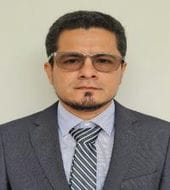Analysis of the Photovoltaic Potential of the University Campus of the State University of the South of Manabí, Jipijapa
Main Article Content
Abstract
The production of electricity through the use of photovoltaic solar systems is given based on a study of electromagnetic irradiation, which has become one of the main renewable energy alternatives, to counteract the effects of global warming, as it is a resource practically unlimited that does not emit greenhouse gases and is available throughout the planet, where it is essential to identify the geographical areas with solar potential, suitable for its use.
The study entitled "Analysis of the photovoltaic potential of the Campus of the South State University of Manabí" aims to analyze the behavior of historical solar irradiation during the period 2012 - 2022, with information acquired from weather stations and the Power Data platform. Access Viewer, to determine the energy potential of the University Campuses, with the projection of implementing photovoltaic systems in the buildings of the higher education center, using the qualitative-quantitative and potential methods, allowed to analyze the statistical data of the study area, calculated the global irradiation or existing energy potential in each of the university campuses, obtaining as a result that the Los Angeles campus and the Complex maintain a greater potential with 4065 W/m2, unlike the Central Building 3998 W/m2 and Divino Maestro 3990 W/ m2, contrasting the results with the statistical software SPSS 21, Minitab 19 and the ArGis 10.8 program, defining the peak solar hours (HSP), and existing energy potential.
Downloads
Article Details

This work is licensed under a Creative Commons Attribution-NonCommercial-ShareAlike 4.0 International License.
1. Derechos de autor
Las obras que se publican en 593 Digital Publisher CEIT están sujetas a los siguientes términos:
1.1. 593 Digital Publisher CEIT, conserva los derechos patrimoniales (copyright) de las obras publicadas, favorece y permite la reutilización de las mismas bajo la licencia Licencia Creative Commons 4.0 de Reconocimiento-NoComercial-CompartirIgual 4.0, por lo cual se pueden copiar, usar, difundir, transmitir y exponer públicamente, siempre que:
1.1.a. Se cite la autoría y fuente original de su publicación (revista, editorial, URL).
1.1.b. No se usen para fines comerciales u onerosos.
1.1.c. Se mencione la existencia y especificaciones de esta licencia de uso.
References
Arla, S., Tapia, M., Guasumba, J., Martínez, J., Asitimbay, J., & Tapia, E. (2017). Validación del Recurso Solar en el Ecuador para Aplicaciones de Media y Alta Temperatura. INNOVA Research Journal, 2(7), 34–45. https://doi.org/10.33890/innova.v2.n7.2017.226
Duarte, A. (2020). ANÁLISE DO POTENCIAL FOTOVOLTAICO RESIDENCIAL EM PORTO ALEGRE. UNIVERSIDADE FEDERAL DO RIO GRANDE DO SUL ESCOLA DEGENHARIA.
Echegaray-Aveiga, R., Masabanda, M., Rodriguez, F., Toulkeridis, T., & Mato, F. (2018). Solar Energy Potential in Ecuador. International Conference on EDemocracy & EGovernment (ICEDEG), 2573–1998. https://doi.org/10.1109/ICEDEG.2018.8372318
Gazzoni, D., Azurdia, I., Blanco, G., Estrada, C., & Carvalho, I. (2010). Energía sustentable en Ámerica Latina y Carabí: Potencial para el futuro.
Jara, J. (2021). Potencial solar fotovoltaico del Ecuador. Celec Ep. https://www.centrosur.gob.ec/
Marín, D., Zalamea, E., & Barragán, A. (2018). Potencial fotovoltaico en techumbre de edificios industriales de alta demanda energética, en zonas ecuatoriales. Revista Hábitat Sustentable, 8(1), 28–41.
Martin, A. (2014). MODELO GEOGRÁFICO PARA LA ESTIMACIÓN DEL POTENCIAL FOTOVOLTAICO EN TEJADOS. CASO DE ESTUDIO: MIRAFLORES DE LA SIERRA. UniversidadComplutense de Madrid.
Mosquera Palacios, O. (2017). Evaluación del potencial solar fotovoltaico para la generación de energía eléctrica en la unidad educativa Juan Abel Echeverría de la cuidad de Latacunga, provincia de Cotopaxi. Propuesta de diseño de un sistema fotovoltaico autosustentable. Obtenido de Universidad Técnica de Cotopaxi.
Ospino, A. (2010). Análisis del potencial energético solar en la región caribe para el diseño de un sistema fotovoltaico. Inge Cuc, 6(1), 95–102. http://revistascientificas.cuc.edu.co/index.php/ingecuc/article/view/296
Pacheco, M., & Yormy, M. (2015). Recursos naturales y energía. Antecedentes históricos y su papel en la evolución de la sociedad y la teoría económica. Energética, 45, 107–115. https://www.redalyc.org/pdf/1470/147040741010.pdf
Quinde-Abril, M., Calle, J., & Armador, J. (2022). Design of a Photovoltaic System for Self-consumption in Buildings at High-Altitude Cities Located in the Equator BT (Communicat).
Santos, R. M. B., Sanches, L. F., Cortes, R. M. ., Varandas, S. G. ., Jesus, J. J. ., & Pacheco, F. A. . (2017). Integrative assessment of river damming impacts on aquatic fauna in a Portuguese reservoir. Science of The Total Environment, 601–602, 1108–1118. https://doi.org/https://doi.org/10.1016/j.scitotenv.2017.05.255
Travesset-Baro, O., Vilella, M., & Borges, P. (2021). Hacia la autosuficiencia energética en las ciudades. análisis del potencial solar fotovoltaico a escala urbana en el Principado de Andorra. CienciAmérica, 10(3), 25–40. https://doi.org/10.33210/ca.v10i3.369
Trejos, A., & Foronda-Gutiérrez, L. A. (2022). Evaluación de herramientas computacionales para análisis de sistemas fotovoltaicos. Ingeniería Y Competitividad, 24(02). https://doi.org/10.25100/iyc.v24i02.11516





